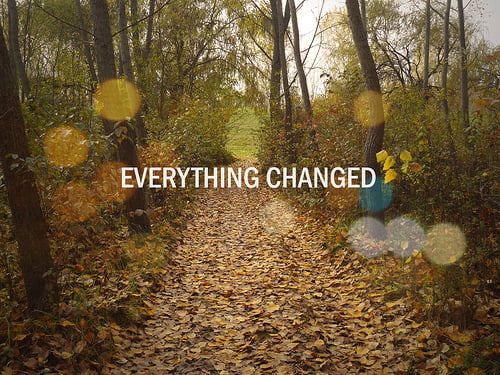Every major turning point in human history, from the discovery of fire to the invention of the internet, can be traced back to a single, powerful concept. These aren’t just minor improvements or tweaks to existing systems; they are ideas that change everything. They fundamentally alter the way we live, think, and interact with the world. This article delves into the anatomy of such transformative ideas, exploring not just what they are, but how they come to be, and the profound ripple effects they create across societies, economies, and cultures. This is about the genesis of true innovation, the moments when a single thought has the power to reshape the future.
The Spark of Genius: The Birth of a Game-Changing Idea
A groundbreaking idea rarely appears fully formed. It’s often the result of years of observation, relentless curiosity, and a willingness to challenge established norms. The most impactful ideas often emerge at the intersection of different fields, where a person with expertise in one area sees a problem through the lens of another.
- Problem-Solving Beyond the Obvious: The greatest ideas are often solutions to problems people didn’t even realize they had. Think of the smartphone before it existed; no one was asking for a single device to serve as a phone, a camera, a music player, and a web browser. The idea emerged from a deeper understanding of human needs and a vision for how technology could fulfill them seamlessly. True innovation isn’t about giving people what they want, but about giving them what they need and don’t yet know is possible.
- Serendipity and Prepared Minds: Louis Pasteur famously said, “Chance favors the prepared mind.” Many of the most significant discoveries in history were the result of a lucky accident. Penicillin, Velcro, and the microwave were all born from unexpected observations. However, it was the “prepared mind” of the inventor that recognized the significance of the accident and saw its potential. This highlights the importance of fostering a deep understanding of one’s field so that when an anomaly or an unexpected result occurs, its potential can be immediately recognized.
- Reframing Existing Concepts: Many revolutionary ideas are not entirely new; they are radical recombinations of existing concepts. The Gutenberg printing press didn’t invent writing or ink, but it combined them with a new mechanical system to make mass communication possible. Similarly, Airbnb didn’t invent renting rooms, but it applied a digital platform model to the hospitality industry, completely disrupting it. The genius lies in seeing old things in a new light and arranging them in a way that unlocks unprecedented value.
The Catalyst Effect: Spreading and Scaling a Transformative Idea
An idea, no matter how brilliant, is worthless if it remains in a vacuum. The true test of a world-changing idea is its ability to spread, gain traction, and scale to have a global impact. This process involves a complex interplay of technology, culture, and market dynamics.
- Technological Enablers: Many ideas that change everything are only possible because of a prior technological breakthrough. The internet was a pivotal enabler for countless ideas, from e-commerce to social media. Without the infrastructure of global connectivity, these ideas would have remained small-scale or purely theoretical. A key aspect of a truly innovative ecosystem is a constant flow of foundational technologies that serve as the building blocks for the next generation of ideas.
- Overcoming Market Resistance: New ideas almost always face resistance. Incumbent industries, consumer habits, and a general skepticism toward the unfamiliar are all barriers to adoption. The innovators behind these ideas must not only create something new but also educate the market on why their solution is superior. This often requires a long, arduous process of convincing and demonstrating value, and sometimes even a willingness to disrupt an entire industry to make room for the new.
- The Network Effect: The most powerful ideas grow exponentially. The telephone wasn’t very useful when only one person had it. Its value increased with every new person who acquired one. This is the network effect in action. Ideas that harness this power become unstoppable. Think of the widespread adoption of QR codes or the viral spread of a new social platform; their value to each user is directly tied to the number of other users, creating a self-reinforcing cycle of growth.

The Ripple Effect: Society Transformed
Once a transformative idea takes hold, its impact extends far beyond its initial application. It influences how we work, govern ourselves, create art, and even understand our place in the world.
- Economic Reshaping: Revolutionary ideas often create entirely new industries and make old ones obsolete. The advent of the personal computer led to the creation of the software industry, while at the same time, it diminished the need for typewriters and physical filing systems. The gig economy, enabled by digital platforms, has reshaped labor markets and the very nature of employment. These shifts create new opportunities but also require societies to adapt to new realities.
- Cultural and Social Shifts: Ideas that change everything also change the way we interact with each other and perceive the world. The automobile not only created a new industry; it also changed how families lived and socialized, enabling suburban sprawl and the concept of the road trip. Social media, born from a simple idea of connecting people online, has fundamentally altered our social fabric, for better or worse, influencing everything from political movements to personal identity.
- Ethical and Regulatory Challenges: With great power comes great responsibility. The rapid spread of a transformative idea often outpaces our ability to understand its ethical implications and regulate it responsibly. The internet’s ability to democratize information also created new avenues for misinformation. AI’s power to automate tasks raises questions about the future of work. The societal and ethical questions raised by these ideas are as significant as the ideas themselves and require a new kind of innovation—in governance, ethics, and social norms—to be adequately addressed.

The Future of Transformative Ideas: Where to Look Next
The journey of transformative ideas is a continuous cycle. As one set of ideas reaches maturity, a new generation is waiting to take their place. So where are the next big bangs of innovation likely to come from?
- The Integration of Biology and Technology: The lines between the digital and the biological are blurring. From gene editing to neuro-prosthetics, ideas that bridge these two realms have the potential to solve some of humanity’s greatest challenges, from curing diseases to enhancing cognitive abilities. This field is ripe for breakthroughs that could redefine what it means to be human.
- Decentralization and Trust: The idea of a decentralized, trustless system—made possible by blockchain technology—has the potential to change our relationship with money, data, and institutions. It could lead to more equitable and transparent systems for everything from finance to governance. This is a foundational idea that is still in its early stages but holds immense promise for a more democratic and secure digital world.
- Sustainable Solutions: With the growing threat of climate change, the most impactful ideas of the next century may well be those that help us live sustainably. This could be anything from new forms of clean energy and carbon capture technologies to revolutionary ideas in waste management and agriculture. These will not be just technological advancements but also systemic and societal shifts in how we consume and produce.
In conclusion, ideas that change everything are the lifeblood of human progress. They are born from a blend of curiosity, preparation, and a willingness to challenge the status quo. They spread through a combination of technological readiness and strategic execution, and their impact is felt for generations to come. Understanding their nature is not just an academic exercise; it’s a way to recognize the potential for change in the world around us and perhaps, even to be the one who generates the next big bang of innovation.






